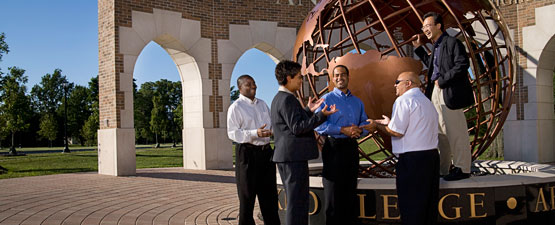Professional Dissertations DMin
Date of Award
1980
Document Type
Project Report
Degree Name
Doctor of Ministry
College
Seventh-day Adventist Theological Seminary
Program
Doctor of Ministry DMin
First Advisor
Steven P. Vitrano
Second Advisor
Robert J. Cruise
Third Advisor
William E. Garber
Abstract
Problem
Although marketing and advertising firms spend millions of dollars annually to determine which types of commerical radio spots are most effective in appealing to specific audiences, little of this research has been done by churches using the broadcast media. The objective of this project, therefore, was to discover which of the most commonly used radio production formats contribute most to credibility and acceptability of religious radio spots whose intended audience is either nominal or rion-Christian and to produce a thirteen-week series of daily public service, radio spots for evangelistic purposes based on this determination.
Method
A telephone survey of 724 persons in the Benton Harbor- St. Joseph, Michigan, area was used to isolate and survey 311 nominal and non-Christians. The survey was conducted during the period of December 1976 to February 1977. Prior to the survey, 386 on-the-street interviews were conducted by the researcher in the survey area to refine and eliminate as much bias as possible from the survey instrument. In addition, twenty-one Andrews University faculty members (whose research opinions were considered significant to this study) were sent copies of a preliminary draft of the survey instrument which sought their advice and counsel.
Results
The most acceptable type of radio spot for most nominal and non-Christians was found to include (1) the use of music, (2) "someone telling a personal experience he has had," and (3), when Christianity is presented, "any Christian telling why he is one." The most credible type of radio spot for most nominal and non-Christians was found to have the same characteristics as the most acceptable type, but with one exception. There was no clear- cut opinion regarding whether or not the use of music in a radio spot affects its credibility.
Conclusions
It was concluded that four commonly used radio production formats studied do contribute to credibility and acceptability of radio spots for nominal and non-Christians. On the basis of these findings and related research, a thirteen-week series of "personal experience," daily radio spots was produced for evangelistic purposes. The series was produced using the facilities of WAUS-FM, the Andrews University radio station.
Subject Area
Radio in religion--Seventh-day Adventists; Television in religion
Recommended Citation
Chase, James David, "TV-Radio Spot Evangelism: An Experiment in Attitude Change" (1980). Professional Dissertations DMin. 477.
https://dx.doi.org/10.32597/dmin/477
https://digitalcommons.andrews.edu/dmin/477
Creative Commons License

This work is licensed under a Creative Commons Attribution-No Derivative Works 4.0 International License.
DOI
https://dx.doi.org/10.32597/dmin/477
Files over 3MB may be slow to open. For best results, right-click and select "save as..."



